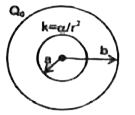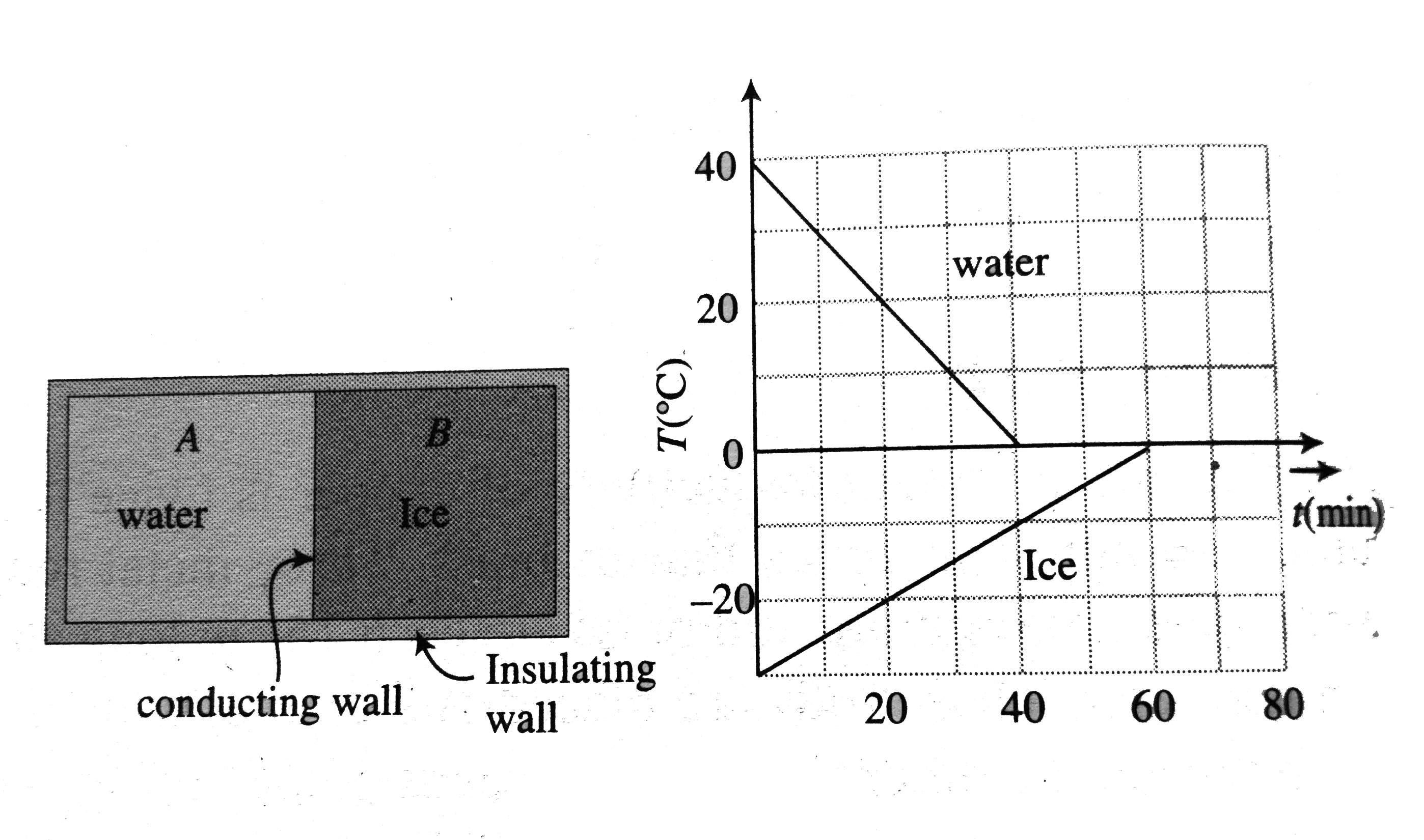Water protects organisms from thermal shock due its high
(a) Thermal conductivity
(b) Latent heat
(c) Dielectric constant
(d) All the above
Thermal conductivity
Latent heat
Dielectric constant
All the above
The correct Answer is:B
To solve the question regarding how water protects organisms from thermal shock, we can analyze the options provided:
1. Understanding Thermal Shock: Thermal shock refers to the rapid change in temperature that can be harmful to organisms. Water's properties play a crucial role in mitigating these temperature changes.
2. Evaluating the Options:
- (a) Thermal conductivity: This refers to how well a substance can conduct heat. While water has a certain level of thermal conductivity, it is not the primary property that protects organisms from thermal shock.
- (b) Latent heat: This is the amount of heat required to change the state of a substance without changing its temperature. Water has a high latent heat of vaporization, which means it can absorb a lot of heat before its temperature changes significantly. This property helps in maintaining a stable temperature in organisms.
- (c) Dielectric constant: This is a measure of a substance's ability to insulate charges from each other. While water has a high dielectric constant, it is not directly related to thermal shock protection.
- (d) All the above: This option suggests that all the properties listed contribute to thermal shock protection, which is not accurate based on our analysis.
3. Conclusion: The most relevant property that helps protect organisms from thermal shock is the high latent heat of water. This allows for slow heating and cooling, thus maintaining a stable internal temperature.
Final Answer: (b) Latent heat
---
- (a) Thermal conductivity: This refers to how well a substance can conduct heat. While water has a certain level of thermal conductivity, it is not the primary property that protects organisms from thermal shock.
- (b) Latent heat: This is the amount of heat required to change the state of a substance without changing its temperature. Water has a high latent heat of vaporization, which means it can absorb a lot of heat before its temperature changes significantly. This property helps in maintaining a stable temperature in organisms.
- (c) Dielectric constant: This is a measure of a substance's ability to insulate charges from each other. While water has a high dielectric constant, it is not directly related to thermal shock protection.
- (d) All the above: This option suggests that all the properties listed contribute to thermal shock protection, which is not accurate based on our analysis.
Topper's Solved these Questions
- THE LIVING WORLDBOOK - DINESH PUBLICATION ENGLISHCHAPTER - THE LIVING WORLDEXERCISE - Check your grasp
12 Videos
- THE LIVING WORLDBOOK - DINESH PUBLICATION ENGLISHCHAPTER - THE LIVING WORLDEXERCISE - Check your grasp
12 Videos
- THE CELL : THE BASIC UNIT OF LIFE BOOK - DINESH PUBLICATION ENGLISHCHAPTER - THE CELL : THE BASIC UNIT OF LIFE EXERCISE - CHECK YOUR GRASP
12 Videos
- TRANSPORT IN PLANTSBOOK - DINESH PUBLICATION ENGLISHCHAPTER - TRANSPORT IN PLANTSEXERCISE - CHECK YOUR GRASP
40 Videos
Similar Questions
Food material can be preserved at
(a) High temperature
(b) Low temperature
(c) Osmotic temperature
(d) All the above.
View SolutionCorrect statements among a to d regarding silicones are :
(a) They are polymers with hydrophobic character.
(b) They are biocompatible.
( c ) In general, they have high thermal stability and low dielectric strenght.
(d) Usually, they are resistant to oxidation and used as greases.
View SolutionCorrect statements among a to d regarding silicones are :
(a) They are polymers with hydrophobic character.
(b) They are biocompatible.
( c ) In general, they have high thermal stability and low dielectric strenght.
(d) Usually, they are resistant to oxidation and used as greases.
View SolutionWhich one is included under ecosystem services
(a) Protection of soil
(b) Conservation and purification of water
(c) Climate control
(d) All the above
View SolutionThe area of cross-section of rod is given by A=A0(1+αx) where A0 & α are constant and x is the distance from one end. If the thermal conductivity of the material is K. What is the thermal resistancy of the rod if its length is l0?
View SolutionAn ice ball of radius a and mass m is placed at 0∘C inside a thick hollow sphere of inner and outer radii a and b whose thermal conductivity varies as k=αr2, where α is a positive constant and r is the distance from centre. The temperature of surrounding is θ0 and latent heat of fusion for ice is Lf. Then , time required to completely melt the ice ball is (Neglect the contraction in volume when ice melts into water and any change in thermal resistance due to melting of ice of the system.)

View Solution
A 0.60 kg sample of water and a sample of ice are placed in two compartmetnts A and B separated by a conducting wall, in a thermally insulated container. The rate of heat transfer from the water to the ice through the conducting wall is constant P, until thermal equilibrium is reached. The temperature T of the liquid water and the ice are given in graph as functions of time t. Temperature of the compartments remain homogeneous during whole heat transfer process. Given specific heat of ice =2100J/kg−K, specific heat of water =4200J/kg−K, and latent heat of fusion of ice =3.3×105J/kg.
Initial mass of the ice in the container equal to
View Solution
A 0.60 kg sample of water and a sample of ice are placed in two compartmetnts A and B separated by a conducting wall, in a thermally insulated container. The rate of heat transfer from the water to the ice through the conducting wall is constant P, until thermal equilibrium is reached. The temperature T of the liquid water and the ice are given in graph as functions of time t. Temperature of the compartments remain homogeneous during whole heat transfer process. Given specific heat of ice =2100J/kg−K, specific heat of water =4200J/kg−K, and latent heat of fusion of ice =3.3×105J/kg.
The value of rate P is?
View Solution
A 0.60 kg sample of water and a sample of ice are placed in two compartmetnts A and B separated by a conducting wall, in a thermally insulated container. The rate of heat transfer from the water to the ice through the conducting wall is constant P, until thermal equilibrium is reached. The temperature T of the liquid water and the ice are given in graph as functions of time t. Temperature of the compartments remain homogeneous during whole heat transfer process. Given specific heat of ice =2100J/kg−K, specific heat of water =4200J/kg−K, and latent heat of fusion of ice =3.3×105J/kg.
View Solution
A 0.60 kg sample of water and a sample of ice are placed in two compartmetnts A and B separated by a conducting wall, in a thermally insulated container. The rate of heat transfer from the water to the ice through the conducting wall is constant P, until thermal equilibrium is reached. The temperature T of the liquid water and the ice are given in graph as functions of time t. Temperature of the compartments remain homogeneous during whole heat transfer process. Given specific heat of ice =2100J/kg−K, specific heat of water =4200J/kg−K, and latent heat of fusion of ice =3.3×105J/kg.
Initial mass of the ice in the container equal to
View Solution
